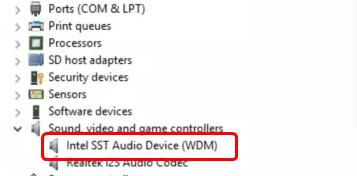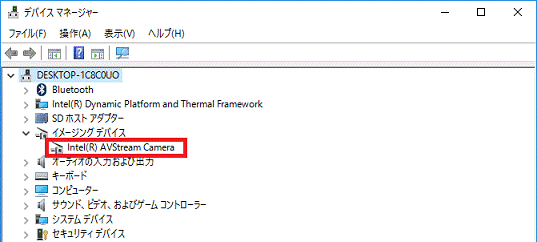Windows audio driver descriptions. MME, WASAPI, and WDM are Windows OS-specific audio drivers. With these drivers, audio is streamed through the OS, which is then sent to an internal sound card or external audio interface. ASIO, on the other hand, streams the audio directly into the interface without the OS needing to process it first. Windows OS starting from Windows 98 implemented the WDM driver model for audio. In fact, there are lot of home based engineers during that time that were exactly depending on WDM drivers for their projects. In this driver, an audio device (such as a soundcard) will have drivers that become part and binded with the Windows kernel. Under intel sst audio device (wdm), the file C: windows system32 drivers isstrtc.sys, I copied in version 6.3.9600.17038. And under Realtek I2S Audio codec, the driver file c: windows system32 drivers rtii2sac.sys, I copied in version 6.4. You have to do this by booting to command prompt under recovery options. Windows Driver Model (WDM) audio drivers make use of the kernel streaming (KS) components, which operate in kernel mode and are part of the operating system. Hardware vendors should make several design decisions before beginning development of a Windows-based audio hardware device.
-->Windows Driver Model (WDM) audio drivers make use of the kernel streaming (KS) components, which operate in kernel mode and are part of the operating system.
Hardware vendors should make several design decisions before beginning development of a Windows-based audio hardware device.
Alesis1394 Wdm Audio Drivers



The first decision is whether to design an audio device that requires a vendor-supplied custom driver. Windows contains operating-system support for PCI, USB, and IEEE 1394 devices that conform to the Microsoft Universal Audio Architecture (UAA) guidelines. The vendor does not need to provide a custom driver for a UAA-compatible audio device.
However, if a vendor-supplied custom audio driver is necessary, the vendor must choose whether the driver should be designed to work in conjunction with the PortCls system driver (Portcls.sys) or the AVStream class system driver (Ks.sys). Both PortCls and AVStream are part of the Windows operating system. PortCls is the correct choice for most audio adapters. For more information about PortCls, see Introduction to Port Class. For more information about AVStream, see AVStream Overview.
When designing a custom adapter driver that uses PortCls, the devices on the audio adapter are made available to applications using WaveRT. For more information, see Introducing the WaveRT Port Driver.
Two additional decisions involve how to present the adapter topology and pin data ranges to audio applications. The topology is a logical map of the data paths and control nodes in the adapter circuitry. The data ranges specify the data formats that the devices can support in their wave and MIDI streams. Both decisions affect how the devices on the audio adapter appear to applications.
In making all of the previously mentioned decisions, the hardware vendor must weigh the value of performance enhancements against the cost of implementing them. Another consideration is whether a particular solution can be made to work on a number of products in the Windows family. This section provides an overview of these issues as well as references to more detailed documentation about specific topics.
Alesis1394 WDM Audio Driver
This section includes the following topics:
